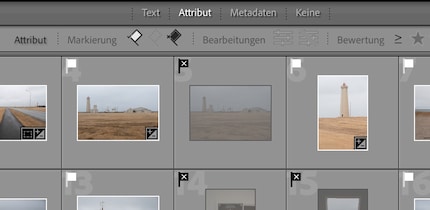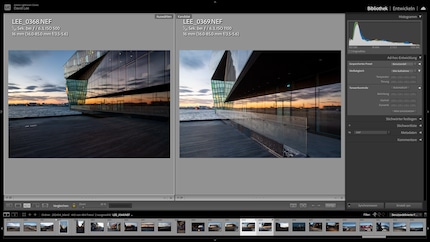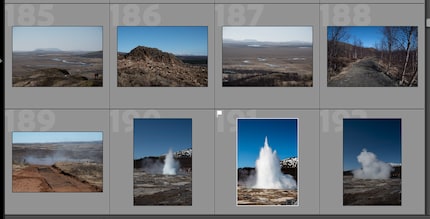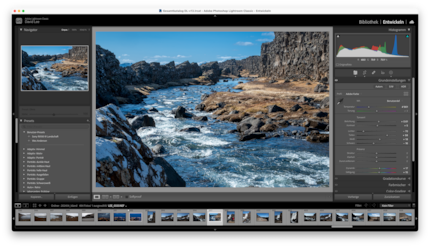
Guide
Tips for better forest photos
by David Lee

We’re all guilty of taking a lot more photos than we need – after all, it’s free. But, it’s better if you make a selection afterwards. With RAW photos it’s non-negotiable. So here are a few tips on how to reduce the load.
You come back from the holidays with hundreds or even thousands of photos, what now? If you’re using Lightroom, you’re probably shooting in RAW and have to edit the photos on your computer. That’s a lot of work. If you sift them out in advance, you can significantly reduce the amount of work involved.
But sorting through them also requires effort. And unfortunately, that’s the most unpleasant part. After a brief initial euphoria when discovering the most beautiful pictures, boredom usually sets in. The photos are saved on a disk and never touched again.
There has to be another way. In this article, I want to help you get through the unpleasant stage as quickly and sensibly as possible.
There are two concepts for viewing and rating images in Lightroom – star ratings and markers. In the star ratings, you rate a picture between one and five stars. With the markers, you simply say «yes» or «no» to a photo. The markers are symbolised with small flags, which are either white or black with a cross.

Which method you use is up to you. I’d always stick with the same one, so it’s easier to search and filter the images. My fellow editor Samuel is an advocate of stars. I, on the other hand, use markers. The various ratings of the stars overwhelms me and I don’t need it: I just need to know whether I want to keep a shot or not.
The advantage of the markers is that the rejected photos can be removed in one go. The corresponding command is located at the bottom of the «Photo» menu, called «Delete rejected photos». You then decide whether Lightroom should only remove the photos from the catalogue or also remove them from the data storage.
To speed up the evaluation process, memorise the keyboard shortcuts. For the stars, simply type a number between 1 and 5, with 0 you delete the rating. For the markers, type the following:
The abbreviations work in both the Library and Develop modules. However, I’d sort out the images in Library mode because you have more viewing options there. You can see the thumbnails in grid view (shortcut G). You can adjust their size at the bottom right. In this view, under «Attribute» you can also choose to only display images with certain markers or star ratings. In addition to Loupe view (E), Compare view (C) is also useful. There you’ll see two images next to each other, which you can also enlarge and move in magnification. Use the lock symbol to determine whether this happens at the same time or independently of each other.

Now you could go through all the pictures in turn and decide for each one whether you want to mark or reject it. But for me, this leads to me skipping at least two out of three photos and thinking: I’ll decide later. Or I mark something and then realise that there are even better, similar pictures, then jump back again and ask myself whether the first one wasn’t best after all.
Above all, however, you’ll quickly become discouraged with a large number of pictures. Decisions cost mental energy, and here you have to make hundreds of decisions. In my experience, there are a few tricks that help:

The hardest part is sorting the large number of average photos. They’re not bad, but they’re not really good either. And it’s hard to make a decision. Because even a mediocre photo can have value if it’s associated with memories.
Of course, you can keep every photo to be on the safe side. Just remember, a huge number of photos makes your photo collection slow and confusing. Plus there’s no way of completely avoiding decision-making. Because if you shoot your photos in RAW format, you have to edit the images and export them as JPEGs. And you don’t want to do that for every single photo. Struggling to decide?
It’s worthlooking at it from another angle: how many photos do I want to view in a slideshow, for example? For a one-week holiday, I think around 100 images are about right. I keep adding until I reach this amount. Possible factors you can consider:
I won’t lie, sifting is and remains laborious. But when you start editing, you’ll realise it’s worth it. You actually come to an end and can complete the project. It’s rewarding. Few, but good pictures also make it more exciting to look at the photos again later. And that’s the purpose of the whole thing.

My interest in IT and writing landed me in tech journalism early on (2000). I want to know how we can use technology without being used. Outside of the office, I’m a keen musician who makes up for lacking talent with excessive enthusiasm.
Practical solutions for everyday problems with technology, household hacks and much more.
Show all